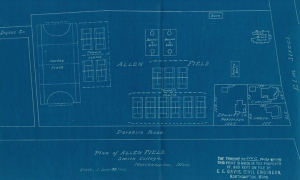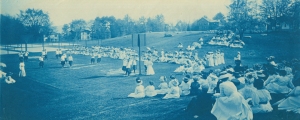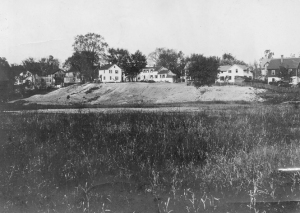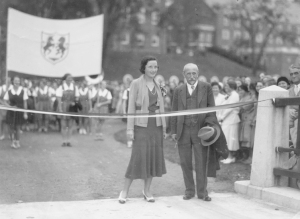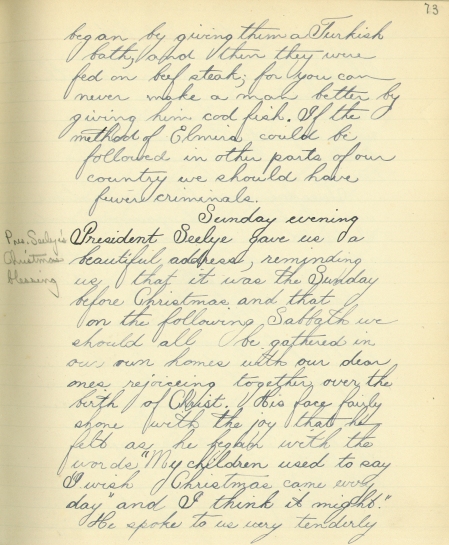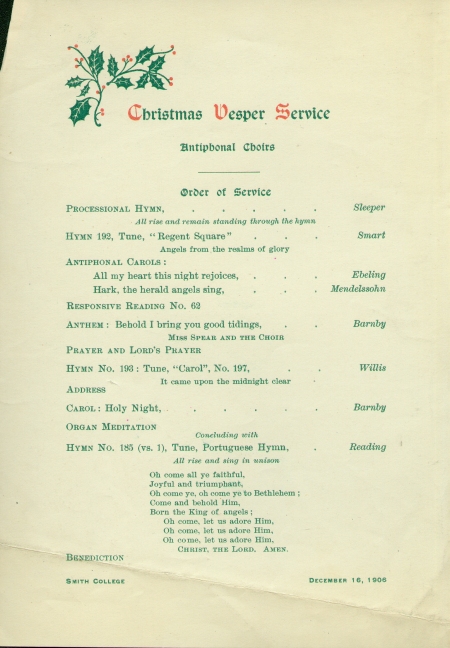With all the talk about renewable energy sources these days, and the current projects at Smith including the solar panels on top of the Campus Center, and the hands-on student work on solar houses in the Physics department and the Center for Design and Fabrication, the College Archives thought it would be interesting to look back at other junctures in Smith’s history where solar energy was utilized.
A 1948 solar house was designed and built by architect Eleanor Raymond in Dover, Massachusetts . Raymond was a graduate of the Cambridge School of Architecture and Landscape Architecture, which was formally associated with Smith College between 1934-1946. The house was the only existing home heated solely with solar energy systems designed by Maria Telkes, a metallurgy researcher at MIT at the time. The design lasted 2.5 years before corrosion and erosion of the tanks used to maintain the system took its toll.
In December 1949, Gladys A. Anslow, professor of physics, and a number of interested Smith alumnae took a tour of the Dover House. The trip was designed to show the work and design of the house, and to garner support for establishing an Institute of solar design at a woman’s college. Anslow, naturally, wished it to be housed at Smith and hoped the Board of Trustees would agree. In her report to President Benjamin Fletcher Wright, she noted that the sponsoring group of women “…selected this institution because of its recognized interest in science, the existing graduate program, and the desire to have the prestige that will go to the sponsoring institution come to the alma mater of several of the sponsors. It is believed that in addition to the prestige…there will eventually be income from patents similar to the income now enjoyed at many of the larger universities and institutions in this country.” Other Smith women involved with the sponsoring group were Ruth H. French, ‘1902, Eleanor Raymond, CSA, Janice Tarlin, ‘1931, and Laura Cabot (Hodgkinson), ‘1922. [report by GAA, December 17, 1949]
The report was presented to the Board of Trustees in early 1950, and after further investigation and lengthy discussions, the idea was voted on, only to have the motion lost. This did not deter Anslow or her colleagues in the Physics department from their investigations of solar energy. In 1952, Nora M. Mohler, chairperson of the Physics department presented on “Our Unpaid Servant, Energy” at Alumnae College.
Unfortunately, this is where the trail ends in the College Archives documenting Smith’s involvement with the Solar Energy Project of the late 1940s and early 1950s. If you have any additional information about Smith’s involvement, we’d love to hear about it!



 Posted by smitharchives
Posted by smitharchives 